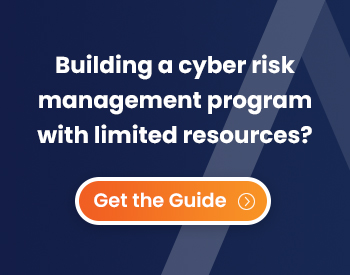The Australian Prudential Regulation Authority (APRA) released Prudential Standard CPS 230 in March 2017. At a glance, the regulation aims to strengthen the cybersecurity resilience and operational risk management of the financial sector in Australia by establishing standards and requirements for cybersecurity best practices. But beneath the surface, there are nuances to CPS 230 that all APRA-regulated entities will need to understand — or risk regulatory sanctions and reputational damage.
Let’s dive into CPS 230 Compliance down under.
First Thing’s First: What is CPS 230?
CPS 230, also known as the Prudential Standard CPS 230, is a regulation established by the Australian Prudential Regulation Authority (APRA) to address cybersecurity resilience in the financial sector.
The regulation sets out requirements for regulated entities, such as authorised deposit-taking institutions (ADIs), insurers and superannuation licensees, ensuring they possess adequate capabilities to detect, respond to and recover from cyber incidents.
While regulated entities have until July 1, 2025, to comply, APRA makes it clear that it expects proactive preparation in 2024.

What Are the Key Objectives and Requirements of CPS 230?
Objective: Enhancing Cybersecurity Resilience. CPS 230 aims to strengthen the cybersecurity resilience of financial institutions by establishing robust frameworks, policies and procedures to mitigate cyber threats effectively.
Requirement: Financial institutions must establish and maintain a robust cybersecurity framework tailored to their specific risk profile and operational environment. This framework should encompass policies, procedures, controls and risk management practices aligned with international cybersecurity standards.
Objective: Promoting Risk Management. The regulation emphasises the importance of proactive risk management practices, including risk identification, assessment, mitigation and monitoring to safeguard against cyber risks.
Requirement: Financial institutions must develop and implement comprehensive cyber incident management plans, detailing procedures for incident detection, response, containment, recovery and reporting. Regular testing and rehearsal of incident response capabilities are also mandated to ensure readiness.
Objective: Ensuring TPRM Security and Incident Response Preparedness. CPS 230 mandates financial institutions to develop comprehensive incident response plans to swiftly address and mitigate cyber incidents, minimising their impact on operations and customers.
Requirement: The board of directors and senior management of financial institutions bear ultimate responsibility for cybersecurity resilience. They are required to actively oversee and ensure the effectiveness of cybersecurity measures. This includes allocating adequate resources and fostering a culture of cybersecurity awareness. Financial institutions are also required to assess and monitor the cybersecurity posture of third-party service providers, including cloud service providers and vendors, to mitigate potential vulnerabilities and ensure resilience across the supply chain.

The Way Forward for Financial Institutions
CPS 230 represents a critical milestone in strengthening cybersecurity resilience within the Australian financial sector and non-compliance could be costly (regulatory sanctions, reputational damage, financial losses, heightened cybersecurity risks, etc.). To keep your house in order (and ensure compliance), you’ll want to keep your focus on:
- Establishing a robust risk culture: By fostering an environment where risk awareness and accountability are ingrained into the organisational ethos, employees are more likely to adhere to regulatory requirements. A strong risk culture encourages proactive risk identification, assessment and mitigation strategies, ensuring that the organisation operates within the guidelines set forth by CPS 230.
- Continuous Improvement and Integration: Compliance with CPS 230 requires an ongoing commitment to enhancing processes and integrating compliance measures seamlessly into existing operations. Integration involves embedding compliance considerations into all aspects of the organisation’s activities, from strategic planning to day-to-day operations, fostering a culture of compliance at every level.
- Maintaining a comprehensive inventory of all relevant data, processes, systems and controls: An inventory helps identify potential areas of non-compliance, gaps in controls and dependencies that may impact regulatory adherence. By regularly updating and reviewing the inventory, organisations can ensure that they have a clear understanding of their compliance landscape and can take appropriate actions to address any shortcomings.
- Choosing the right partners: Selecting the right partners, such as vendors, service providers and third-party entities, is vital for CPS 230 compliance. Organisations must conduct thorough due diligence to assess the compliance posture of potential partners and ensure alignment with regulatory requirements. By choosing partners with a strong commitment to compliance and risk management, organisations can mitigate the risk of non-compliance and strengthen their overall compliance efforts.
- Choosing the right technology: Leveraging technology solutions is instrumental in achieving and maintaining CPS 230 compliance. Automation tools, risk management software and compliance platforms can streamline processes, enhance transparency and facilitate monitoring and reporting activities. By investing in technology-enabled solutions, organisations can effectively manage compliance requirements, identify emerging risks and demonstrate adherence to CPS 230 regulations.
Discover Mitratech GRC Management
Learn more about our unique suite of end-to-end risk and compliance solutions.




